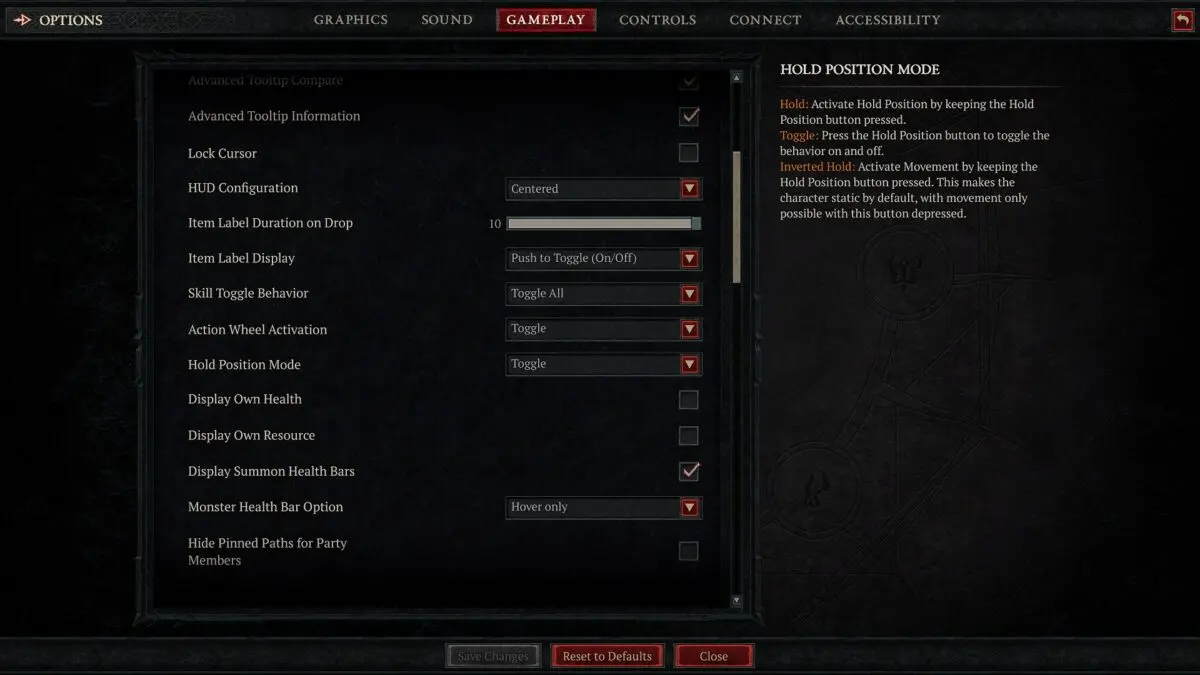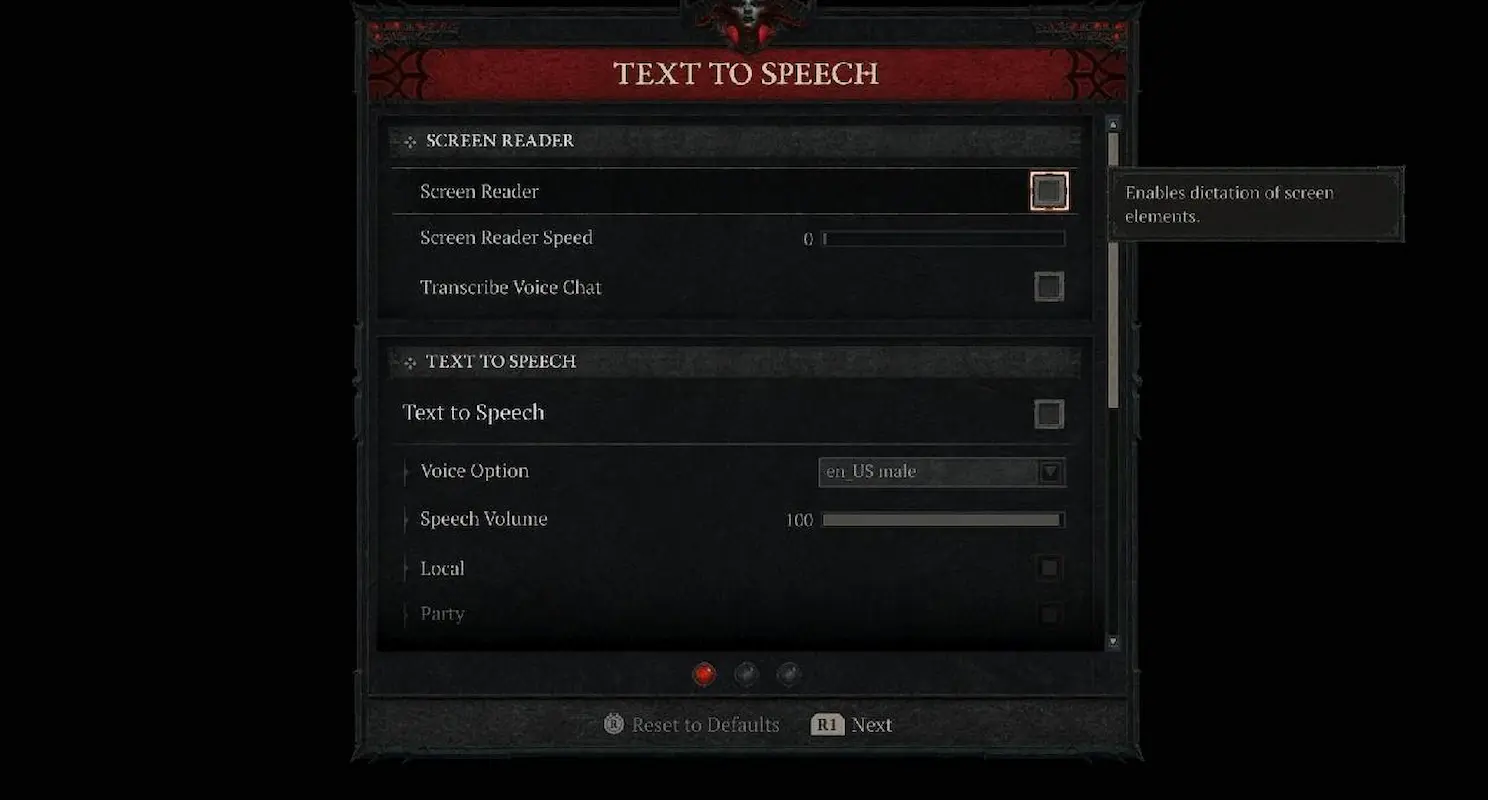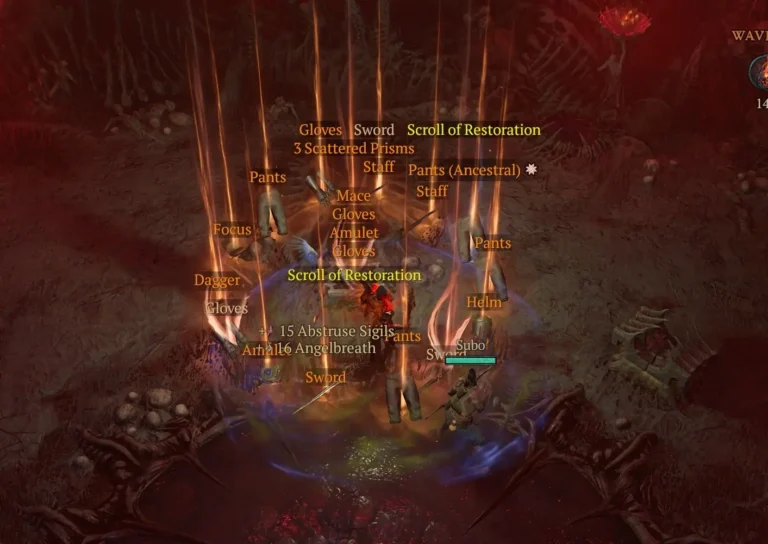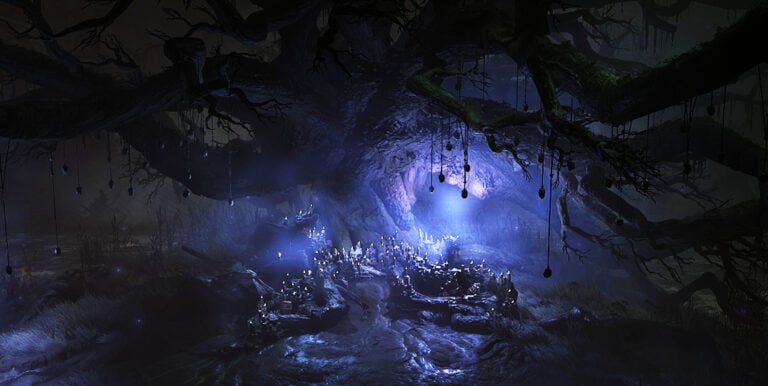Two years after its release, Diablo IV remains one of the most talked-about action RPGs, not just for its combat or storytelling, but for something far more inclusive: accessibility. In a special second-anniversary interview with Game Accessibility Nexus, Blizzard’s Senior Lead UX and Accessibility Designer, Drew McCrory, opened up about the game’s bold approach to inclusive design, and what is still to come.
Accessibility as a Core Design Pillar

While most games focus on accessibility options late in development, Diablo IV made inclusion a core pillar from day one.
“Accessibility wasn’t an afterthought, it was built into every system,” McCrory explained.
This early focus meant accessibility had equal weight to core gameplay systems like combat. “When I sat in meetings, I had as much influence as the combat designers,” he added.
This mindset empowered the team to build flexible systems from the start, like remappable controls, customizable subtitles, color contrast settings, and loot audio cues. But it also meant rethinking long-standing Diablo mechanics, like abilities that require holding a button to activate.
“We got rid of that for players who can’t do holds. No assumptions, just options,” McCrory said.
WASD Controls: A Simple Feature with Big Impact
Perhaps the most requested feature post-launch was WASD movement. A big ask for a game built around point-and-click controls. But for players using assistive software or dealing with physical strain, mouse movement was not always viable.
Thankfully, Diablo IV’s strong controller support gave the devs a head start.
“We tricked the game into treating WASD as a controller. Suddenly, it all clicked,” said McCrory, who himself suffers from carpal tunnel and found the change personally game-changing.
Accessibility That Benefits Everyone
From auto-pinning quests to highlighting enemies and NPCs, many of Diablo IV’s accessibility features have become mainstream tools, even embraced by streamers and guide creators. But this is not surprising to McCrory.
“Accessible design is just good design,” he emphasized. “It helps those who need it and improves the game for everyone else.”
In fact, features originally meant to reduce motor strain, like pets automatically picking up loot or mercenaries helping in combat, also reduce grind and boost fun for all players. “We always ask: what’s the fun part? Everything else should be optional.“
The Power of a Live Service Model
Unlike traditional games, Diablo IV’s live-service format has allowed the team to continuously refine and expand its accessibility. One major win was the Blind Navigation Suite, added after launch and now essential for low-vision players. Features like audio cues, auto-pathing, and screen reader updates keep evolving with every season.
“We didn’t ship with blind navigation in dungeons, and I’m still chasing that,” McCrory admitted. “But we get constant feedback, and my engineers jump in to fix things fast. That’s the power of live service.”
And speaking of feedback, players can email directly at [email protected], and McCrory reads every message himself.
Community, Transparency, and the Future
Blizzard’s transparency does not stop at patch notes. In May, they released a documentary for Global Accessibility Awareness Day titled “Seeing Beyond: Diablo IV’s Screen Reader & Navigation Innovation.” It explained not just the what, but the why and how behind key features offering value to players and developers alike.
McCrory is hopeful these behind-the-scenes videos will become a regular part of the game’s ongoing journey.
“It shows our team’s heart. And honestly? It helps the whole industry push the bar higher.“
Accessibility vs. Quality of Life – Or Both?
A fascinating point in the interview was the blurred line between accessibility and quality of life. Are mercenaries and auto-loot just convenience? Or vital tools for players with limited mobility?
For McCrory, the answer is simple: “If it reduces unnecessary input or cognitive load, it’s worth adding. Let players focus on what’s fun. That’s the magic.“
What Is Still Missing?
Despite the game’s progress, McCrory is upfront about what is not yet solved. The lack of audio navigation in dungeons remains one of his biggest frustrations. Dungeon layouts do not use the same navigation mesh as the open world, making implementation tricky, but it is still on the roadmap.
Finally, McCrory stressed the importance of co-creating accessibility with the community. From the 30-50 emails he receives daily to feedback during PTR tests, players shape what gets worked on next.
“Tell me what your pain points are, and I’ll do everything I can to fix them,” McCrory said. “This is your game too.”
Diablo IV is proving that accessibility is not just a checklist, it is a philosophy. From foundational design decisions to real-time community feedback, Blizzard’s approach is helping redefine what it means for a game to be playable by everyone.
As the industry continues to evolve, Diablo IV stands as a symbol for how thoughtful design can bring more players into the fight, and makes that Hell truly welcomes all!



